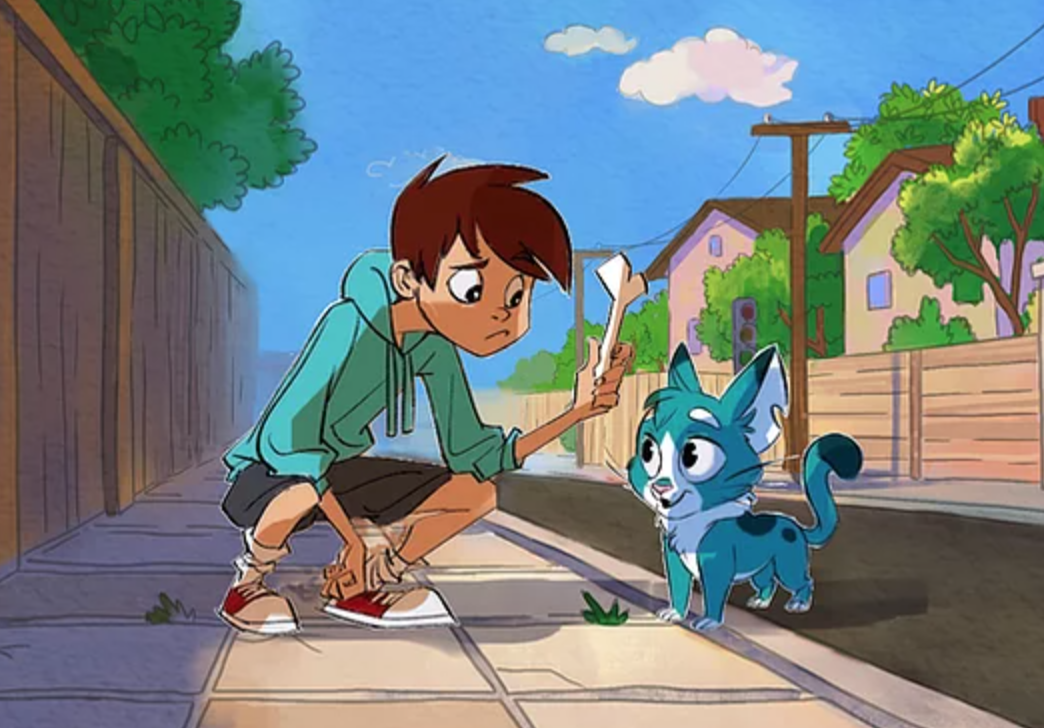This was a time constrained class assignment in which we were given 24 hours, audio files, and a video from EA’s Need for Speed (Shift 2) designed to emulate a real test video package for game audio applications. We were able to edit and process the files any which way but we were not allowed to use any audio files outside the ones we were given. I did my sound design the very old fashioned way: by taking existing audio and manipulating them with time compression expansion and pitch shifting. The only plugins I used were Altiverb (Outdoor Stadium), Futzbox, Waves Doppler, EQ-7 band, Pitch Shift, and Time Shift. I pitched many sounds up and down, as well as high or low passed on an EQ to find new frequencies. I slowed specific sounds down and sped them up to increase or decrease the energy of a sound in a specific situation. Speeding up a very long sound will increase its energy or impact. I made great use of the doppler plugin for many of the car-bys and animal roars and breaths to accent many of the transitions in the piece.
Editing –
I wanted to make the first half about the race. My goal was to make it seem like the listener was at the race itself without getting too literal into that idea. I put specific announcer lines and audience cheers at the beginning before the picture started to warm up to that feeling. Instead of emulating a realistic situation of all of the car-bys, I threw in all types of variations of multiple bys throughout the entire first section. I created low LFE’s by pitching down and low passing the audience sound. The idea here was to recreate the feeling of exhilaration and excitement one gets when they play a racing game.
I built that sonic feeling until the transition scene. I added delayed pieces of the wood snap sound to the transition in addition to a classic camera shutter because it accented all of the quick cuts and chaos of the camera shots. A reversed cymbal served as a sound design rise that took us out of that chaos and into the surprised look on the drivers face.
The vision in the second half of the video was to accent the idea of the fast-paced collision action of a racing game. I added in a high-pitched sound I got from pitching up and high passing the fire sound that coincided with the announcer’s call of a crash. I then started to add pieces of collisions as the camera gradually zoomed out and added bys to fast transitions. The last transition sound I layered in a few bys with the whoosh breath and doppler’d the pig squeal to get an extremely high pitch zippy sound that worked quite well. When we hit the black screen, I originally had just the announcer speaking, however I realized that the point of this is to sell a racing game, and why would we not hear an engine with that? I wanted to lose the low end and have just the two layers play off of each other as the title came up.
Mixing –
The mixing process was pretty simple. Almost all of the car-bys were doppler’d in different ways. I thought adding doppler would be better and less jarring than just hard panning the bys. I did not pan many of the bys for that very reason – adding too much pan takes the audience away from the point and the excitement of the sonic experience. I added in futz and some EQing to the announcers voice to make the experience feel more authentic. I also added outdoor reverb to many of the bys and collisions to make it feel like we were in the space of the arena. I did not do this to every sound because I wanted there to be foreground sounds and variance in addition to the background sounds. In so doing this, the piece felt like it had more depth of field.
This was probably one of my favorite projects to do at VFS thus far. I love working a story through a limited scope of constraints when it came to the audio files we could use. After all, it's what I used to do before I attended the school!
~MJ

